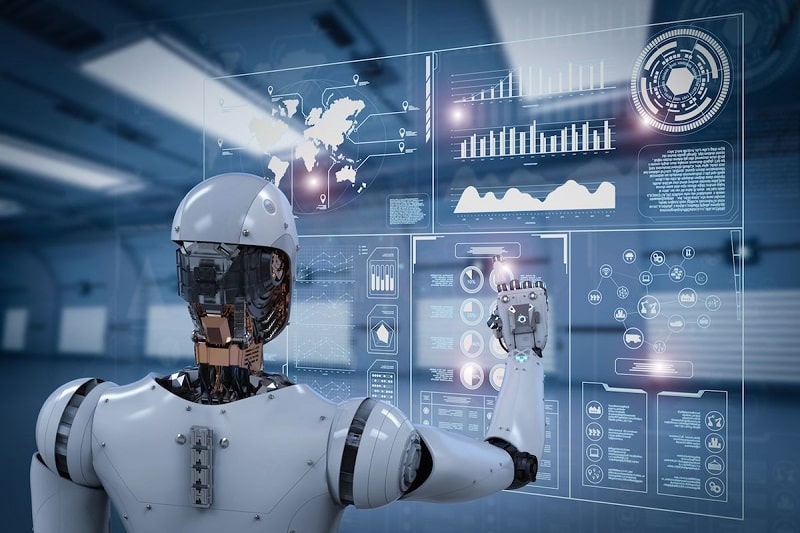In 2025, Artificial Intelligence (AI) is revolutionizing training and development (T&D) strategies, transforming how organizations upskill employees and prepare for a tech-driven future. With the global AI market valued at $200 billion and expected to reach $1.8 trillion by 2030 (Statista, 2025), AI’s ability to personalize learning, enhance efficiency, and predict skill needs is reshaping corporate learning. As 50% of jobs now require AI-related skills (Gartner, 2025), organizations must leverage AI to remain competitive. This article explores AI’s transformative impact on T&D, its benefits, challenges, and practical applications for modern workplaces.
The Need for AI in Training and Development
The rapid pace of technological change demands agile T&D strategies. Traditional methods—classroom training or generic e-learning—struggle to address diverse employee needs or keep up with evolving skill requirements. In 2025, 85% of executives report a skills gap, with 60% of workers needing reskilling to adapt to AI-driven roles (Deloitte, 2025). AI addresses these challenges by delivering tailored, scalable, and data-driven learning experiences, ensuring employees are equipped for roles in data science, cybersecurity, and beyond.
How AI Transforms Training and Development
AI integrates machine learning (ML), natural language processing (NLP), and predictive analytics to revolutionize T&D. Here are four key ways AI is reshaping strategies:
1. Personalized Learning Paths
AI creates customized training programs by analyzing employee performance, preferences, and career goals. Adaptive learning platforms, like Degreed or EdCast, use AI to recommend courses, videos, or microlearning modules tailored to individual needs. For example, an employee aiming for a data analyst role might receive Python tutorials, while a manager gets leadership training. In 2025, personalized learning improves engagement by 30% and skill retention by 25% (EdTech Review, 2025).
- Example: IBM’s SkillsBuild platform uses AI to deliver bespoke learning paths, boosting completion rates by 40% (IBM, 2025).
2. Predictive Skill Gap Analysis
AI forecasts future skill needs by analyzing industry trends, job descriptions, and organizational goals. Tools like Gloat or LinkedIn Skills Insights identify gaps, such as a need for AI ethics expertise, and recommend training to bridge them. This proactive approach ensures alignment with market demands, with 70% of companies using AI for workforce planning (Forrester, 2025).
- Example: Accenture’s AI-driven talent platform predicted a 20% demand increase for cloud computing skills, prompting targeted training (Accenture, 2025).
3. Immersive and Interactive Training
AI enhances engagement through immersive technologies like virtual reality (VR) and gamification. AI-powered VR simulations, used by firms like Walmart, train employees in real-world scenarios, such as handling customer complaints, with 80% higher retention than traditional methods (PwC, 2025). NLP-driven chatbots provide real-time feedback, simulating workplace challenges. These tools make learning interactive, especially for Gen Z workers, who prioritize experiential training (70% preference, LinkedIn, 2025).
- Example: Boeing’s AI-VR training for technicians reduced onboarding time by 35% (Boeing, 2025).
4. Automated Content Creation and Delivery
AI streamlines T&D by generating and curating content. Generative AI tools, like Articulate 360, create training modules, quizzes, or videos in minutes, reducing development costs by 40% (Training Industry, 2025). AI also automates delivery, scheduling courses based on employee availability and learning pace, ensuring minimal disruption to workflows.
- Example: SAP’s SuccessFactors uses AI to auto-generate compliance training, saving 500,000 hours annually (SAP, 2025).
Benefits of AI in Training and Development
AI-driven T&D offers significant advantages:
- Scalability: AI delivers training to thousands simultaneously, critical as 90% of organizations plan to reskill workforces by 2030 (World Economic Forum, 2025).
- Cost Efficiency: Automation and content reuse cut T&D costs by 30%, with ROI improving 20% (McKinsey, 2025).
- Engagement: Personalized, interactive formats increase participation by 35%, reducing dropout rates (EdTech Review, 2025).
- Agility: AI updates content in real time, ensuring relevance as 40% of skills become obsolete every three years (Gartner, 2025).
Challenges and Considerations
Despite its potential, AI in T&D faces hurdles:
- Bias in Training Data: AI models trained on biased data may recommend irrelevant or unfair learning paths. For instance, 25% of AI systems show gender or cultural bias in skill recommendations (ScienceDirect, 2025). Regular audits and diverse datasets are essential.
- Access Inequality: Small businesses, with 50% lacking AI expertise, struggle to adopt advanced T&D platforms (TechMagic, 2025). Cloud-based solutions like Coursera for Business can bridge this gap.
- Employee Resistance: 30% of workers fear AI-driven training dehumanizes learning (Deloitte, 2025). Blending AI with human coaching maintains engagement.
- Cost of Implementation: High initial costs for AI platforms (e.g., $50,000 for enterprise licenses) deter adoption. Open-source tools like Moodle offer affordable alternatives.
Practical Applications for Organizations
To leverage AI in T&D, organizations can:
- Adopt AI Platforms: Use tools like Docebo or TalentLMS for personalized learning, integrating with HR systems for seamless tracking.
- Start Small: Pilot AI for specific teams, like sales training, before scaling. Pilot programs yield 15% higher success rates (Training Industry, 2025).
- Upskill HR Teams: Train HR on AI analytics via programs like SHRM’s AI certification, adopted by 200,000 professionals (SHRM, 2025).
- Monitor Outcomes: Use AI dashboards to track metrics like completion rates and skill acquisition, ensuring 20% higher ROI (Forrester, 2025).
The Future of AI in T&D
In 2025, AI’s role in T&D is expanding, with generative AI creating hyper-realistic simulations and NLP enabling multilingual training, critical as 60% of global firms operate cross-border (McKinsey, 2025). The T&D market, valued at $370 billion, is projected to grow 10% annually, driven by AI innovations (Training Industry, 2025). However, ethical AI use, aligned with frameworks like NIST’s AI Risk Management (NIST, 2024), is crucial to avoid bias and ensure inclusivity.
